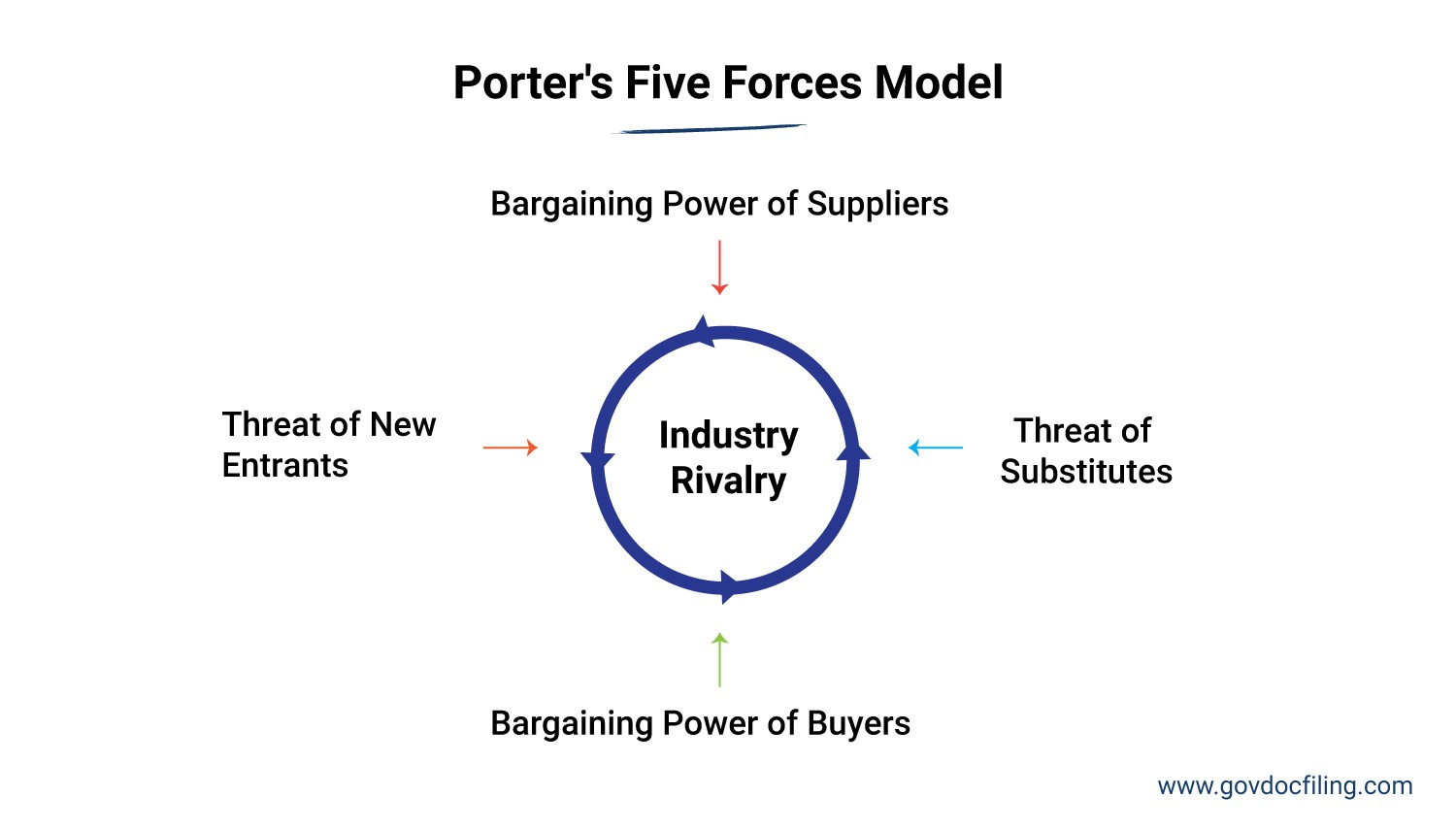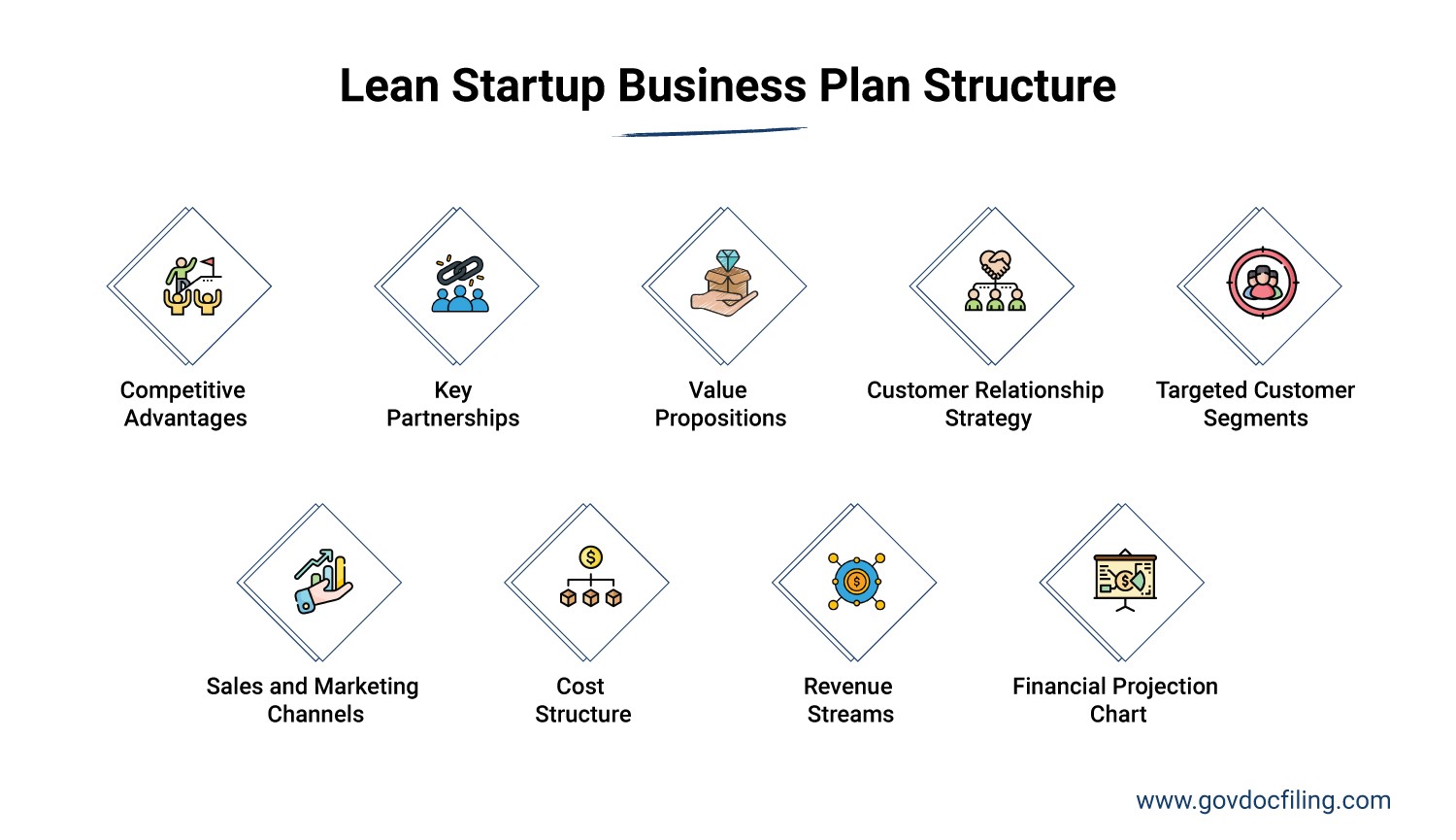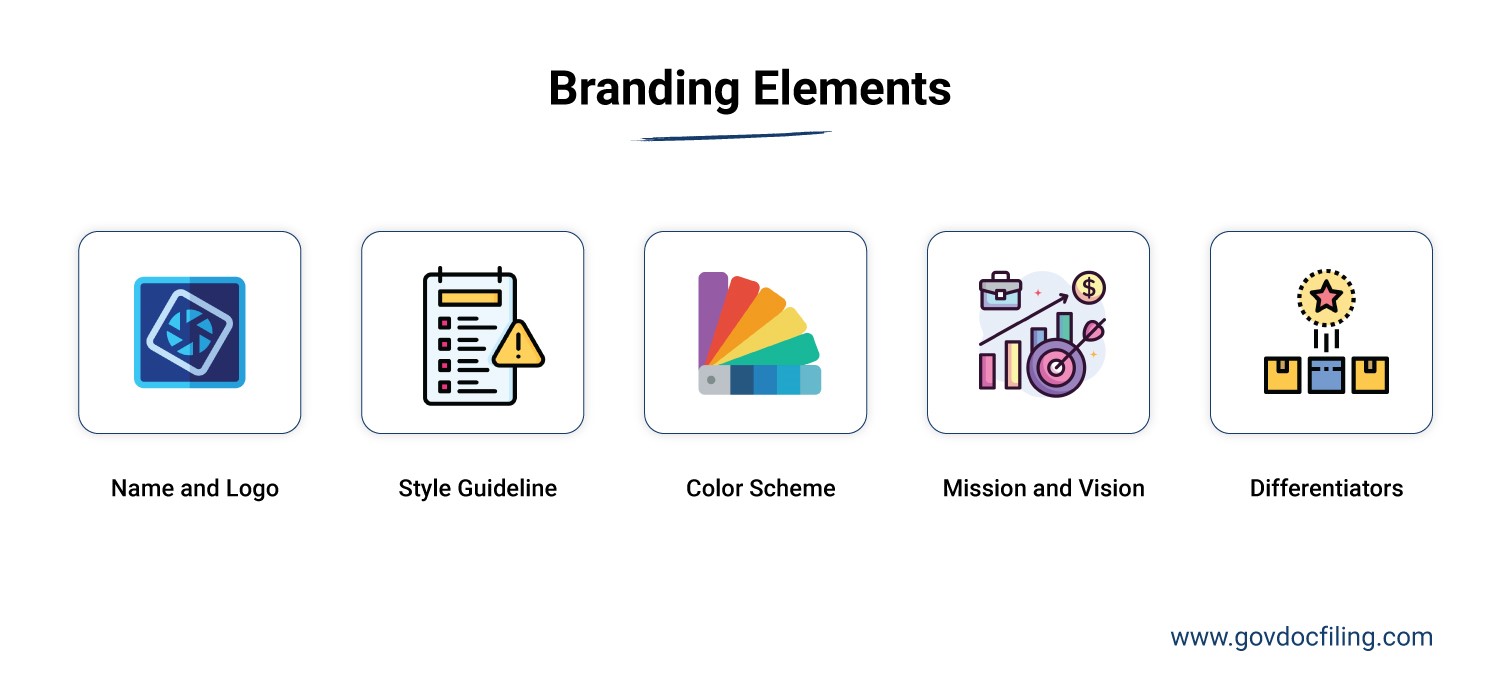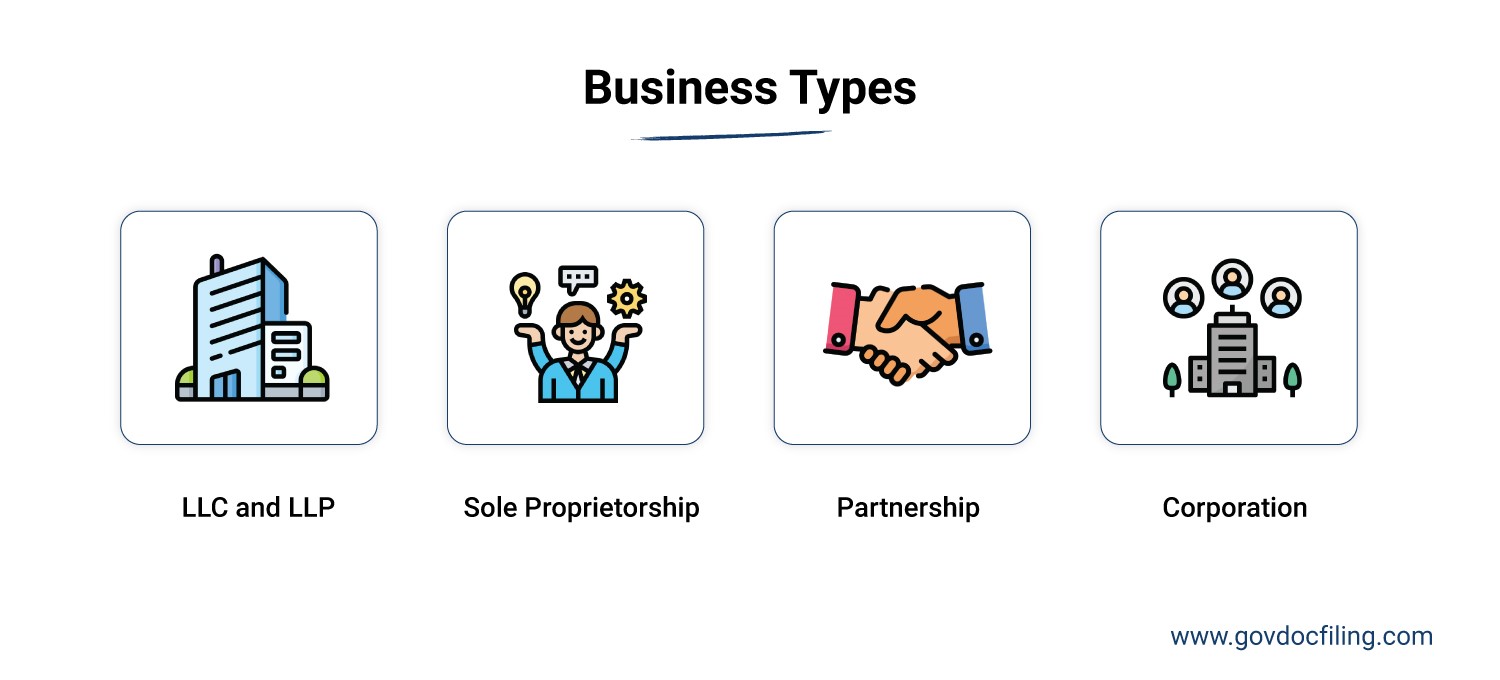Let’s face it — starting a business is no piece of cake. There’s so much that needs to be done. That’s why a business startup checklist is essential to help you keep track of everything.
With so many moving parts that need to be taken care of, you need a resource that can help you take care of it all.
After all, starting a business from scratch would mean that you’d need to make a business plan, look for funding, find employees, and so much more.
That said, here’s an in-depth business startup checklist that will come in handy when you’re starting your business.
A Simple Seven-Step Business Startup Checklist
Let’s take a look at the checklist that you need to follow when you’re starting your business in the United States.
1. Do Market Research
The first thing in your business startup checklist should be market research. It helps you identify your target audience and the potential market size.
Additionally, you can find your competitors and understand your product-market fit. Finding competitors is especially important as over 4.35 million new business applications were filed last year (2020).
So, here is how you conduct market research for your new business:
Identify Your Ideal Customers
Starting a business without understanding your consumers is a big mistake. Gathering demographic information early on can help you reduce risk as your company would just be an idea then.
To identify your ideal customer base, you should look into demographics to better comprehend opportunities and barriers to customer acquisition.
Population data on age, wealth, family, interests, and anything else that is pertinent to your enterprise can be useful here.
You can ask the following questions to yourself in order to understand your ideal customer better:
- Need: Who are the people that really need your products/services?
- Demand: Who demands your product/service?
- Location: Where do your ideal customers reside? How can you reach them?
- Economic indicators: What’s the employment status and income range of your target group?
- Market Saturation: How many similar products/services are already available in the market?
- Pricing: How much are your ideal customers willing to pay for your products/services?
Research the Existing Players
Of course, you already know some of your top competitors. But you might not know the mid-small scale businesses that offer products/services similar to yours.
Hence, it becomes crucial to include every scale of business in the research phase.
You can either use existing market studies or can conduct research on your own by contacting your target customers. A good idea would be to come up with a checklist to determine if a particular business is your competitor or not.
Existing sources can save you a lot of time and energy, but the data may not be as specific to your audience as you would like.
You can use it to answer questions about industry trends, demographic data, and household incomes, which are both broad and quantifiable. If you don’t have the time or energy, here is a list of market research sources – market research sources
Or, if you want to conduct the research by yourself, you can start by asking customers directly via surveys, questionnaires, in-depth interviews, etc.
The next element in this business startup checklist is quite similar.
Find Competitive Advantage
You can gain competitive insights by studying the activities of firms vying for your customers. This information is imperative for establishing a competitive advantage that generates long-term revenue.
You can perform a competitive analysis for this item on the checklist. Your analysis should list your rivals by product category or service and customer group. You might want to include the following in your competitor analysis checklist:
- Market share
- Strength and weaknesses
- Opportunity for your business to enter the market
- Any threat you might face to capture your customers
- Level of importance of the target market to your competitors
- Secondary or indirect competitors who have or can gain market share
And this brings us to the next item on our business startup checklist.
Analyze Industry Landscape
Often, it is possible that several industries are competing to serve the same market that you are targeting. That’s why it’s important to find these industries.
You can use Porter’s Five Forces model to enhance your competitive analysis by industry by taking into account the level of competition, the threat of new competitors or services, and the impact of suppliers and consumers on price — basically the entire landscape.
2. Create a Business Plan
Next item in your business startup checklist is about creating a business plan that talks about how you’re going to carry out your business operations and scale your business. It should also cover your financial plan and projections. This will come in handy when you’re looking for funding.
Next item in your business startup checklist is about creating a business plan that talks about how you’re going to carry out your business operations and scale your business. It should also cover your financial plan and projections. This will come in handy when you’re looking for funding.
Investors want to feel certain that their investment will pay off. Your startup’s business plan will convince people to work with you or invest in your company if you properly create it.
There is no correct or incorrect method to create a business plan; it should just satisfy your requirements.
Generally, the business plans are categorized into two segments: traditional and lean startup models.
Traditional Business Plan Format
A traditional business plan is the most widely used model and requires detailed information in a standard structure. They require effort to create and tend to be dozens of pages long.
If you’re very detail-oriented, want a comprehensive plan, or plan to request financing from traditional sources, you might prefer the traditional business plan format.
However, you don’t have to use the business plan outline verbatim when you write your business plan. Instead, choose the sections that are the most relevant to your business and goals.
Here is a traditional business plan checklist that you can use to create your own:
- Executive Summary
- Company Description
- Market Study
- Company Structure and Management Strategy
- Product or Service Line/s
- Marketing and Sales Strategy
- Funding Request
- Financial Projections
- Appendix
Lean Startup Plan Format
A lean startup plan uses a standard structure but is less common. Such plans focus on summarizing only the most important points of the key elements of your business plan. They may be created in as little as one hour and typically have only one page.
A lean startup format may be a good choice if you want to establish or describe your business quickly, your business is relatively simple, or you want to revise your business plan frequently.
This business plan format uses charts that depict your company’s infrastructure, customers, and financials using only a limited number of elements. They’re useful for visualizing tradeoffs and fundamental information about your business.
Following is a checklist for a lean startup plan:
- Competitive Advantages
- Key Partnerships
- Value Propositions
- Customer Relationship Strategy
- Targeted Customer Segments
- Sales and Marketing Channels
- Cost Structure
- Revenue Streams
- Financial Projection Chart
3. Calculate Your Startup Cost
The next big thing in this business startup checklist is to estimate how much it’ll cost to get your startup off the ground.
Preparing for your startup cost is the key to business success. You will have to pay bills before your business opens its doors. Hence, understanding your future expenses will help you get off to a good start.
Generally, startup cost includes:
- Office space
- Equipment and material
- Inventory handling
- Utilities
- Communications
- Insurance
- Licenses and permits
- Legal and accounting
- Human resources expense
- Customer acquisition cost
- Market research cost
Once you have your list of expenses, you can determine how much they’ll really cost. Each expense will have a unique cost estimate process.
Some expenses, such as permits and licenses, will have straightforward costs.
Whereas you may need to estimate other costs that are less certain, like employee wages, office maintenance, etc.
4. Brand Your Business
The next thing in this business startup checklist is branding your business. You need to come up with a name (that’s unique, memorable, and easy to spell), logo, brand message, and other branding elements.
Branding ensures that your audience remembers your business with ease.
Following is a checklist for branding your business:
- Create a mission and vision statement
- Pick a suitable name that is available to be registered and has a domain name available
- Outline key qualities and differentiators of your brand
- Create a brand logo and tagline
- Pick a color scheme related to your logo
- Develop branding style guideline
5. Register Your Business
Once you’ve selected your business name and other branding elements, you should legally establish your business. You could either form an LLC, Sole Proprietorship, Partnership, or Corporation.
Based on the type of business structure you choose, the business registration process will differ.
So let’s discuss the various legal structure types for businesses in brief:
Limited Liability Company or Partnership
When you create an LLC or LLP, you become a member of the firm along with any company co-owners. Your personal assets are also safeguarded if the company goes bankrupt or is sued as your liability is restricted to your stake in the business.
Compared to other business types like Corporations, the startup cost for LLCs and LLPs is low too.
Sole Proprietorships
To begin and operate this sort of business is the simplest. Sole Proprietorship indicates that you are the company and all assets and liabilities are yours as well.
You’ll be personally responsible for all of the firm’s debts and legal issues. That makes it bad on the liability front. However, it’s the easiest to get started and also gives you the pass-through taxation feature.
Partnership
A Partnership is similar to Sole Proprietorships, except that there is more than one owner in this model.
A partnership operating agreement typically structures the business relationship in this business type. Also, legal and financial obligations are split between the partners, and profits are also shared. That said, there’s no liability protection in this case too.
Corporations
When you create a Corporation, you establish a distinct legal entity that owns all of the company’s assets and liabilities, just like an LLC.
Corporations are generally more appealing to outside investors—you may raise money by selling company stock through an initial public offering (IPO). They offer the best liability protection but you would be subject to double taxation.
6. Get Your EIN
The next thing to cover in this business startup checklist is getting your EIN.
Irrespective of the type of business, except a Sole Proprietorship with no employee, all businesses must register themselves with the IRS and receive an Employer Identification Number (EIN).
The EIN is your company’s federal tax identification number that will be necessary to pay taxes, apply for business licenses, and hire employees.
When you start your business by leveraging our services, we’ll also get an EIN for you.
7. Open a Bank Account for Your Business
For sending and receiving funds, you must open a company bank account. This is essential to ensure that your personal and business finances are separate.
To start your business bank account, you’d typically need to provide the following:
- Your ID
- EIN
- Business formation documents
- Ownership agreements
8. Get Licenses and Business Permits
The business startup checklist doesn’t end at formally establishing your business. Even after you’ve started your business, you need to get several other permits to run it smoothly.
These include health, fire department, and zoning permits, among others. Of course, the types of permits required would vary depending on the type of business you’re running.
So, in a general sense, let’s talk about the four types of licenses you’d require to run a business:
Federal Licenses
Not all businesses would require a federal license. But if you’re indulged in any of the following activities, you have to get in touch with the concerned federal agency to know about the permissions required for doing business:
- Investment advising (S. Securities and Exchange Commission)
- Preparation of meat products (S. Food and Drug Administration)
- Drug manufacturing (S. Food and Drug Administration)
- Broadcasting (Federal Communications Commission)
- Selling alcohol, tobacco, or firearms (Bureau of Alcohol, Tobacco, Firearms and Explosives)
- Ground Transportation (S. Department of Transportation)
State Licenses
States have different licensing and permit requirements for different occupations and professions.
So, to find the requirements for your business, you should contact the respective state agency.
Sales Tax Permit
When you’re operating in a certain state, you might have to collect and pay state sales tax on the goods or services you provide. You can find out whether you’re required to do so by checking with the state’s revenue department.
However, many service providers who don’t offer a physical, tangible products aren’t required to collect sales tax.
To break the confusion, you should contact our legal service department.
Business License
Most cities and counties require businesses to obtain a business license. This license allows the company to operate in the specified city or county. You’d typically have to get this from the city or county office.
9. Outsource Critical Operations
By now, your business is established, but the business startup checklist isn’t done yet.
Irrespective of the type of business you’re in, there will always be some business operations like bookkeeping, legal, and payroll in which you won’t have expertise.
Still, they’re critical for legal compliances or even the smooth functioning of your business.
So how do you make sure that such operations are taken care of?
The answer lies in business consulting services.
Your business startup checklist has to have a place for outsourcing your business services.
For example, your business can avail the following services:
Legal Services
You don’t have to employ a bunch of lawyers or spend thousands of dollars to get fantastic legal support. Small-to-medium-sized businesses can get outstanding legal assistance from business consultants as well.
Bookkeeping
The time crunch is a problem with accounting in small businesses and startups. Data entry is often neglected, and documents that are needed to finish reports are often lost or misplaced.
Even if there is accounting software in place, small business owners are often occupied in the core business operations, and accounting frequently takes a backseat to other critical issues.
In such cases, consultants like Bench.co can provide businesses with a team of bookkeepers to maintain accounts and financials.
Frequently Asked Questions
1. How do I get business insurance?
Getting business insurance is a must-have item on your business startup checklist.
Here is a four-step checklist for getting business insurance:
- Assess your business risks
- Find a reputable licensed insurance agent
- Compare the plans and prices
- Re-assess the available options every year
2. What are the different legal structures for companies?
Businesses can be formed under the following legal business structures:
- Limited Liability Company / Partnership
- Sole Proprietorship
- Partnership
- Corporation
3. What business structure is the best for small businesses and why?
Sole Proprietorships and Partnerships are the best legal structures for small businesses.
The reasons are the following:
- They are easy to form
- Have less amount of government regulations
- Easy tax setup and less paperwork
- Simplified business ownership
However, it’s worth noting here that investors won’t be very inclined to invest in businesses formed as Sole Proprietorship and Partnerships.
Still, for a small business that doesn’t require external funding, Sole Proprietorships and Partnerships are the best legal structures.
4. What should be included in my business startup checklist?
The following are the most crucial elements of a business startup checklist:
- Identifying ideal customer profiles
- Researching existing players in the market
- Analyzing current industry landscape
- Creating a business plan
- Branding the business
- Registering the business
- Getting the EIN
- Opening the business bank account
- Obtaining federal, state, sales tax, and business licenses
- Outsourcing business services to experts
5. How do I create a business plan?
The following is a step-by-step checklist for creating a business plan:
- Write an executive summary
- Describe your business in brief
- Conduct market study and include it in the plan
- Develop your company structure and management strategy
- Describe your product or service lines
- Explain your marketing and sales strategy
- Request for funding
- Illustrate financial projections
Here is Your Checklist
Now, when you know everything that should be on your business startup checklist, it’s time for you to get started.
Wouldn’t it be great if you could have a handy business startup checklist?
Check out the below infographic designed by GovDocFiling to get a checklist for starting your business. It’s got everything that you need to get started in the world of entrepreneurship.




